In memory of those who have crossed the bar
Fearless of storm or foe,
Guarding the traffic of the east and west,
Giving with hearts heroic of their best,
The brave mine-sweepers go.
Horace Rumsam (1902-1949)
Since 1940, Horace had been stationed in the English Channel, ceaselessly – almost routinely – sweeping paths through German minefields. The vessels to which he’d been posted for the past 4 years were well past their best (some had seen service in WW1), but he was now on detachment with the Royal Canadian Navy, serving on HMCS Blairmore, a Bangor class minesweeper. These vessels weighed 672 tons and had a crew of 60. Their maximum speed was 16 knots and they were armed with one 40-mm gun, one 3-inch gun and four .303-inch machine guns.
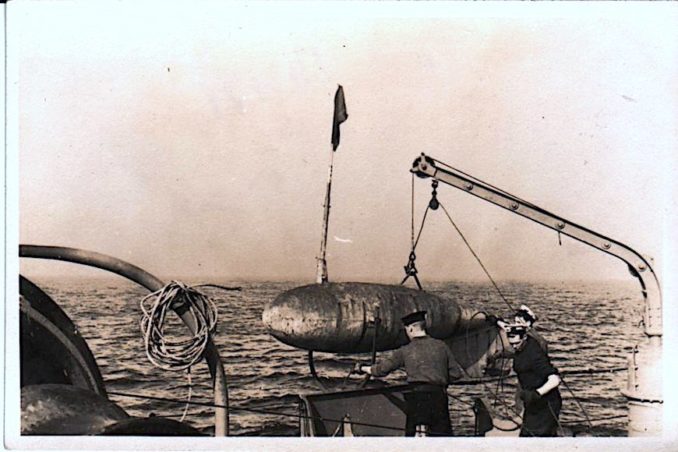
© DJM 2022, Going Postal

© DJM 2022, Going Postal

© DJM 2022, Going Postal

© DJM 2022, Going Postal
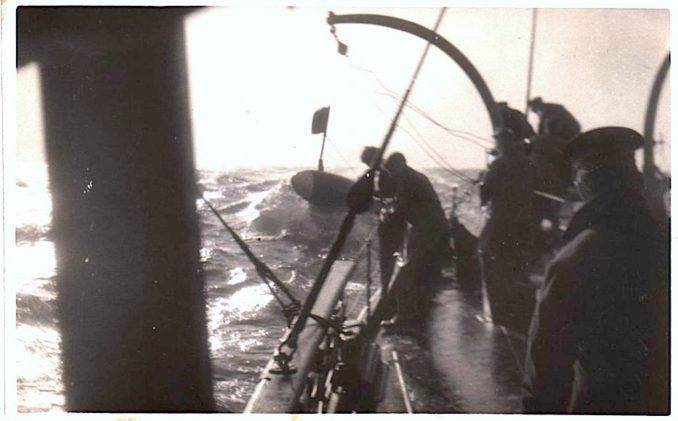
© DJM 2022, Going Postal

© DJM 2022, Going Postal
Horace was now engaged in his fourth year of hostilities, & since March 1944 Blairmore had been assigned to the 31st Minesweeping Flotilla. They were based at Portland & about to become an integral part of Operation Neptune, the cross-Channel crossing phase of Operation Overlord – the Allied plan that launched the invasion of German-occupied France. The seaborne assault and landing phases of the Allied invasion of Normandy in 1944 was perhaps the largest, most intricate and meticulously planned naval endeavour in WWII. Paramount to its success was the absolute necessity for a vast amount of requisite detailed work in its conception, planning and execution to maximise success and minimise intent to the enemy. Nothing could be overlooked in the planning of this ambitious operation if the landing forces were to gain a successful bridgehead and lodgement, with the necessary elements of surprise and speed, upon the five designated beach areas and beyond. It seems incredible today to realise that approximately seven thousand individual vessels were to be involved in the subsequent period to the end of July 1944, including warships, troop landing craft, transport, supply and support ships.
To the minesweepers was to fall the responsibility of leading the assault forces to the Normandy beaches. Contingent upon their effectiveness and timely efficiency in clearing the German mine barrier protecting the area, there lay the potential to cross that finely dividing line between success, or otherwise, for the opening day of this amphibious opposed invasion to establish the second front. The flotilla would depart early on June 5th to begin their mission. Initially led in a symbolic gesture by the Polish destroyer Orp Slazak (a British destroyer loaned to the Polish navy-in-exile; Poland had been the first country attacked by Nazi Germany), they first headed to Area Z, southeast of the Isle of Wight and referred to as “Piccadilly Circus.” This would be the RP through which every ship of Neptune would pass before turning South in ten lanes toward Normandy & the beach assault areas.

Courtesy of Gordon Smith, & adapted from Stephen Roskill’s War at Sea.
A dark overcast sky loomed overhead; the low rumble of engines and waves filled the air as the flotilla began their southward sweep around 5:30pm, advancing much like snowploughs clearing a motorway, directed to hold their line even if engaged by the enemy. Navigation had to be perfect amidst the chaotic waters, requiring constant concentration. Along with nine other flotillas, the 31st spent nearly 12 nerve-wracking hours clearing every mine out of their respective approach lane before sweeping the areas designated for lowering landing craft and fire support ships. Dimly-lit buoys were laid behind flotillas to mark the paths for the invasion force. Mines were either detonated underwater or were forced to the surface, but they could not be detonated once surfaced for fear of alerting the German defenders (they instead let the mines float out of the lanes lest they pose immediate danger).
The final hours were spent excruciatingly close to the coastal defences, less than a mile at times, and detection would have been met with furious bombardment from the Germans. The Allied plan for Neptune expected the vessels to be detected and fired upon, and heavy casualties (as high as “two-thirds”) were seen as a regrettable but necessary cost.
But no bombardment came.
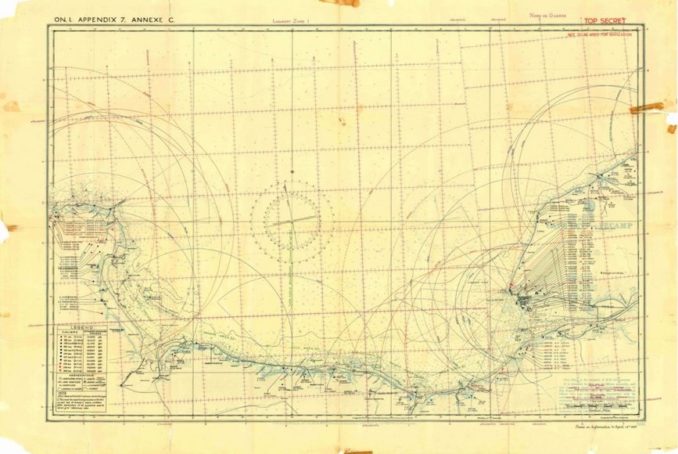
Courtesy of CFB Esquimalt Naval & Military Museums.
On the morning of June 6th, without a single minesweeper lost, the main armada came into view as the sun rose and only then did the German guns finally open up. As the 31st flotilla continued sweeping throughout the Seine Bay, they were about to witness one of the most gruesome battles of the entire Western Front. Behind the minesweeping flotillas, the massive invasion force was slowly steaming towards France. Blairmore continued its approach to clear Lane 3 towards beach sectors Charlie, Dog, Easy and Fox, better known by their collective codename: Omaha. The 29th and 1st US Infantry Divisions along with nine US Rangers Companies were in the van, whilst behind were their supplies & support personnel, including – remarkably – VBM (See Family at War Part 1)
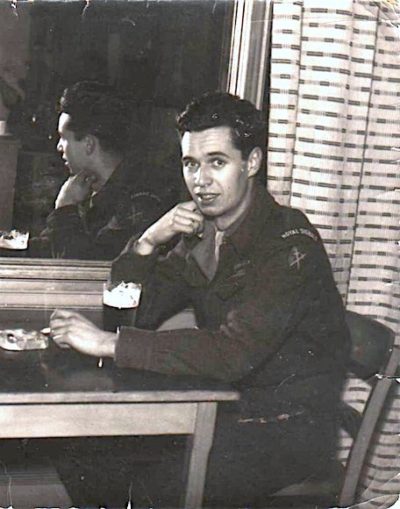
© DJM 2022, Going Postal
VBM had “gone for a sodger” straight out of his boarding school in Bushey. He left there with aspirations of journalism, but after basic training at Catterick had been subsequently trained as a High Speed Wireless Operator at The Dell, closely liaising with US Signals Intelligence in England as part of the Special Projects Branch, handling the deciphered ULTRA product that was cascading out of Bletchley Park.

© DJM 2022, Going Postal
Landing behind the first waves their radio telegraph station was set up & functioning within four hours of arrival, to provide the main artery of communication between Army & General HQs.
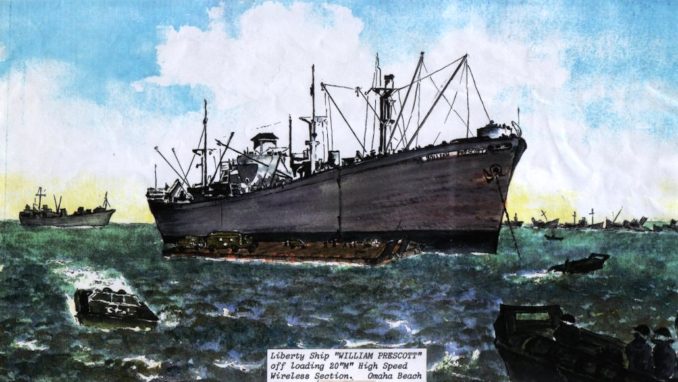
© DJM 2022, Going Postal
Both Horace & VBM survived the day, & indeed the War. VBM went on from Omaha Beach to Paris, where he & an older woman (the ultimate Parisienne cliché) became an “item”, before moving into Belgium & getting himself on a charge for losing his rifle. That is “losing” as in the stake in a card game. With maquisards, their self appointed guards. The officer in charge was preparing papers for a court-martial at Malmedy but both he & they were lost in the chaos of the withdrawal during the German push into the Ardennes in December 1944. VBM & Section (Wireless operators, Drivers, Fitter, Instrument Mechanic, Electrician & Cook, total 24 personnel) were then moved south & arrived in Munich late April 1945 where he reunited with his war correspondent squeeze, visiting Dachau with her 2 days after the camp was liberated. His war ended in Nuremberg where he attended the war trials, transmitting verbatim court statements back to the UK.
After June 6th 1944, Horace & the 31st Minesweeping Flotilla spent the following months clearing the shipping lanes between the United Kingdom and mainland Europe. On 8 October 1944, he was off Le Havre when sister ship Mulgrave suffered an explosion. The minesweeper had hit a mine and after damage control efforts saved the ship, Blairmore took the vessel in tow and brought her to port. By 1945 Horace had been promoted to the rank of Temporary Acting Lieutenant-Commander when he was awarded the Distinguished Service Cross (DSC).

Courtsey of Michael Friend.

© London Gazette, Public domain
His investiture took place in December 1945, there, he was joined by Gwen (See Part 1 of Family at War)
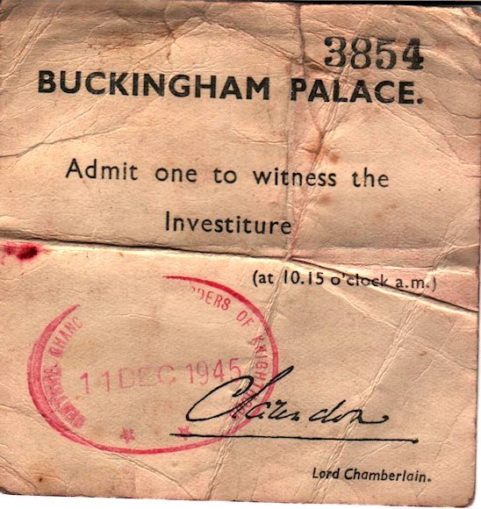
© DJM 2022, Going Postal

© DJM 2022, Going Postal
Sadly, Horace lasted just four years after the end of the War. The cause of death was, officially, pneumonia & congestion of the heart, but the incredible strain of the long arduous war years spent minesweeping the Channel must have been a contributory factor. The last words of this tribute – written on the back of the investiture invitation – I leave to Gwen………
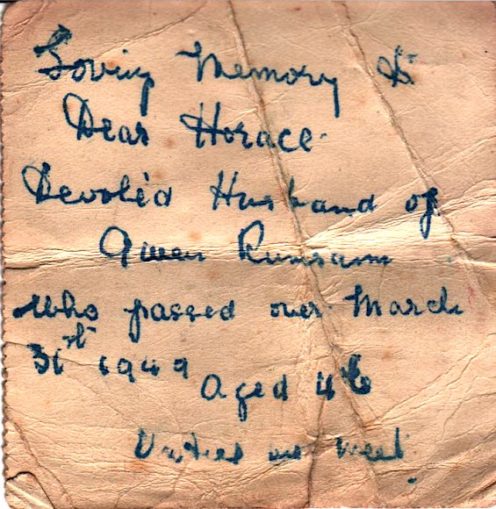
© DJM 2022, Going Postal
The attached photographs were taken by Horace – mostly from the bridge – and are part of my family history. Some of them have his writing (in pencil) on the reverse, which enables certain items to be identified. These articles are a testament to his – & so many others – intestinal fortitude – & hopefully a fitting tribute & memorial to a world & people long gone.
© text & images DJM 2022



